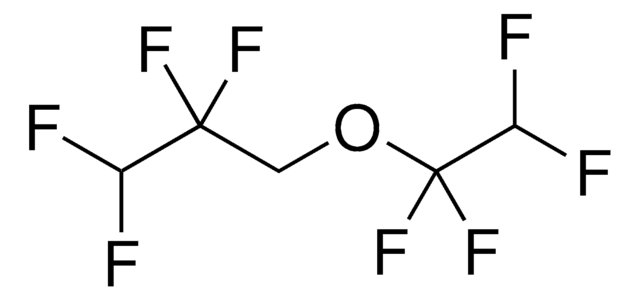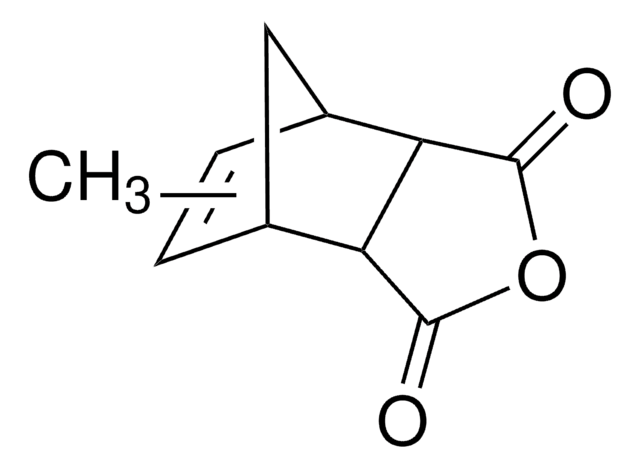224111
Ethylene glycol diethyl ether
98%
Synonyme(s) :
1,2-Diethoxyethane
About This Item
Produits recommandés
Pression de vapeur
9.4 mmHg ( 20 °C)
Essai
98%
Forme
liquid
Indice de réfraction
n20/D 1.3923 (lit.)
pb
121 °C (lit.)
Pf
−74 °C (lit.)
Densité
0.842 g/mL at 25 °C (lit.)
Chaîne SMILES
CCOCCOCC
InChI
1S/C6H14O2/c1-3-7-5-6-8-4-2/h3-6H2,1-2H3
Clé InChI
LZDKZFUFMNSQCJ-UHFFFAOYSA-N
Vous recherchez des produits similaires ? Visite Guide de comparaison des produits
Application
- Correlation between urinary methoxyacetic acid and exposure of ethylene glycol dimethyl ether in a lithium battery plant.: This research investigates the exposure levels of ethylene glycol diethyl ether within a lithium battery manufacturing environment. By analyzing the correlation between urinary biomarkers and chemical exposure, the study provides insights into occupational health and safety measures required in industrial settings where such chemicals are used (Yokota et al., 2007).
Mention d'avertissement
Danger
Mentions de danger
Conseils de prudence
Classification des risques
Eye Irrit. 2 - Flam. Liq. 2 - Repr. 1A
Risques supp
Code de la classe de stockage
3 - Flammable liquids
Classe de danger pour l'eau (WGK)
WGK 2
Point d'éclair (°F)
71.6 °F - closed cup
Point d'éclair (°C)
22 °C - closed cup
Listes réglementaires
Les listes réglementaires sont principalement fournies pour les produits chimiques. Seules des informations limitées peuvent être fournies ici pour les produits non chimiques. L'absence d'indication signifie qu'aucun des composants n'est répertorié. Il incombe à l'utilisateur de s'assurer de l'utilisation sûre et légale du produit.
EU REACH SVHC Candidate List
EU REACH Annex XVII (Restriction List)
Faites votre choix parmi les versions les plus récentes :
Certificats d'analyse (COA)
Vous ne trouvez pas la bonne version ?
Si vous avez besoin d'une version particulière, vous pouvez rechercher un certificat spécifique par le numéro de lot.
Déjà en possession de ce produit ?
Retrouvez la documentation relative aux produits que vous avez récemment achetés dans la Bibliothèque de documents.
Les clients ont également consulté
Notre équipe de scientifiques dispose d'une expérience dans tous les secteurs de la recherche, notamment en sciences de la vie, science des matériaux, synthèse chimique, chromatographie, analyse et dans de nombreux autres domaines..
Contacter notre Service technique















